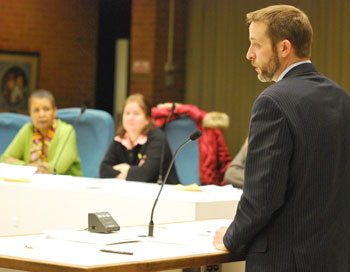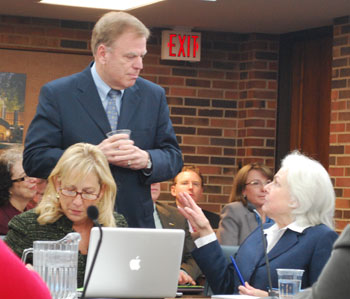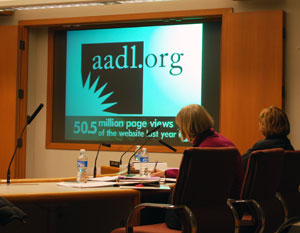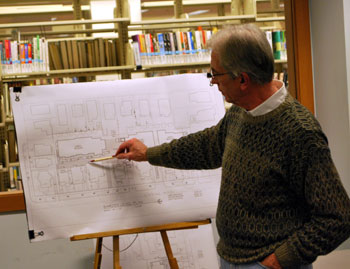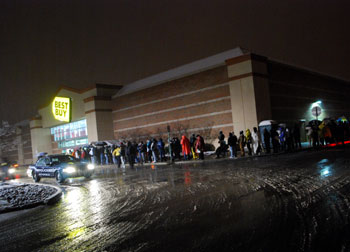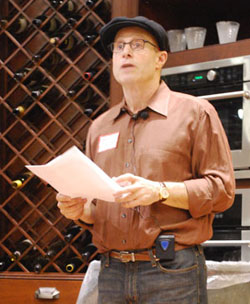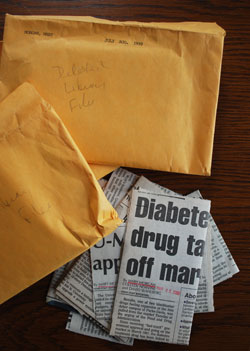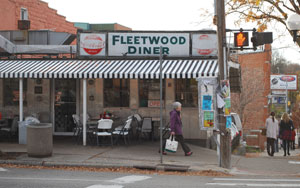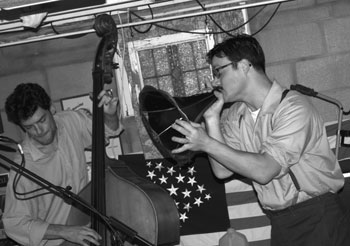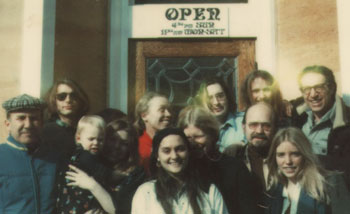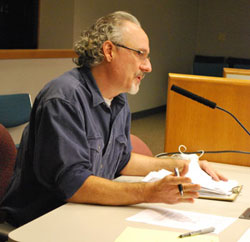Library Lot Math: 6 – 2 + 2 = 6
At its Friday morning meeting, the committee responsible for evaluating development proposals for the Library Lot agreed to reconsider two of the proposals previously rejected.

Sam Offen reads a section of the Library Lot RFP that he interpreted to mean that financial considerations should come later in the process. At right is Jayne Miller, community services area administrator. (Photos by the writer.)
The suggestion for reconsideration had been brought to the committee by two of its members, Margie Teall and Stephen Rapundalo, who also serve on the city council. Monday’s city council meeting had included conversation about the issue.
The committee will now re-include in the interview process the two proposals it had eliminated at its December meeting. Representatives for all six proposals to develop the top of the Fifth Avenue underground parking structure will be interviewed in a little less than two weeks. On Jan. 19, the two that had been dropped previously – proposals that call for predominantly open space in that area – will be interviewed, followed on Jan. 20 by interviews of the other four proposers.
Related to this process, at its Wednesday meeting the Downtown Development Authority had approved up to $50,000 for a consultant to assist with the review of proposals. So on Friday, the committee was also briefed on the request for qualifications (RFQ) for the consultant, which has now been released – and no candidates with operations in Washtenaw County will be considered. [Full Story]




